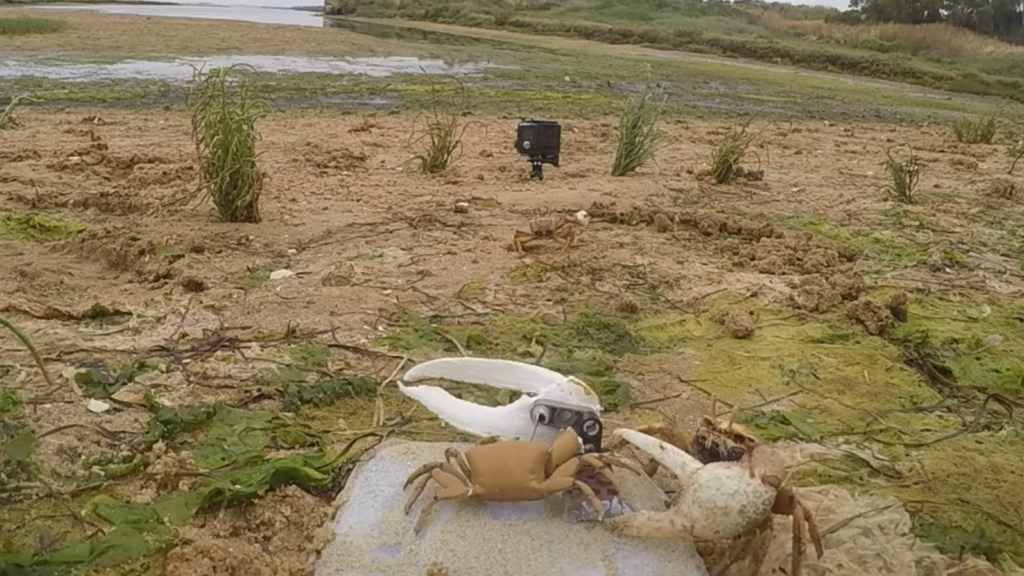A robot posing as a tough male crab recently challenged real crabs to a showdown during mating season — and the videos are hilarious.
The robot, nicknamed “Wavy Dave,” infiltrated fiddler crab (Afruca tangeri) communities on the mudflats of southern Portugal and participated in claw-waving contests, during which males wave one oversized claw to attract females. However, Wavy Dave’s mission had problems from the get-go, a new study revealed.
“The females realised he was a bit odd, and some of the males tried to fight him,” study first author Joe Wilde, a statistician and modeler in ecology and environmental science at Biomathematics and Statistics Scotland, said in a statement. “One male broke Wavy Dave by pulling off his claw. We had to abandon that trial and reboot the robot.”

Claw waving is an important part of fiddler crab reproduction. If a male successfully attracts a female during these displays, then the female enters the male’s burrow and allows him to fertilize her eggs, so the stakes are high.
Despite the claw-breaking incident, Wavy Dave proved to be enough of a contender that researchers gained insight into how male crabs respond to rivals. The researchers published their findings Wednesday (Aug. 6) in the journal Proceedings of the Royal Society B Biological Sciences.
Related: Watch this cute robot elephant go bowling — it’s the first 3D-printed robot of its kind
Scientists already knew that many animals change and adapt their display behaviors based on the presence and proximity of their rivals. However, less is known about how animals respond to changes in their rivals’ signaling behavior, according to the study.
Wilde used a 3D printer to create a model of a fiddler crab, and then built Wavy Dave’s claw-waving mechanism. The robot crab had two interchangeable claw options for its display — one average length and one large — and was controlled from a mobile app using Bluetooth.
The researchers put their robot to the test on the crab-filled mudflats of Ria Formosa Natural Park. Female fiddler crabs typically select males who have larger claws and who wave their claws quickly, according to the statement. When Wavy Dave was around, the researchers found that rival males waved for longer but not faster. In the study, the researchers speculated that the males assumed a female was present because of Wavy Dave, but they waited to actually see the female before going all out with their own display.
The team also found that males were less likely to retreat into their burrows when the robot crab was waving, particularly when Wavy Dave’s claw was smaller than theirs and thus potentially less attractive to a female. Furthermore, the real crabs were less likely to compete if their robot rival had a larger claw, potentially sensing the contest was a lost cause or were wary of being attacked, according to the study.
The study’s findings suggested that male crabs change their behavior in response to what their rivals are doing, investing more energy when they’ve got a greater chance of success.
“If you own a shop and your rivals start selling things really cheaply, you might have to change how you run your business,” Wilde said. “The same might be true for males signalling to attract females — and our study suggests males do indeed respond to competition. Our findings reveal the subtle ways in which these crabs adjust their behaviour to compete in a dynamic environment, investing more in signalling when it is likely to be most profitable.”
